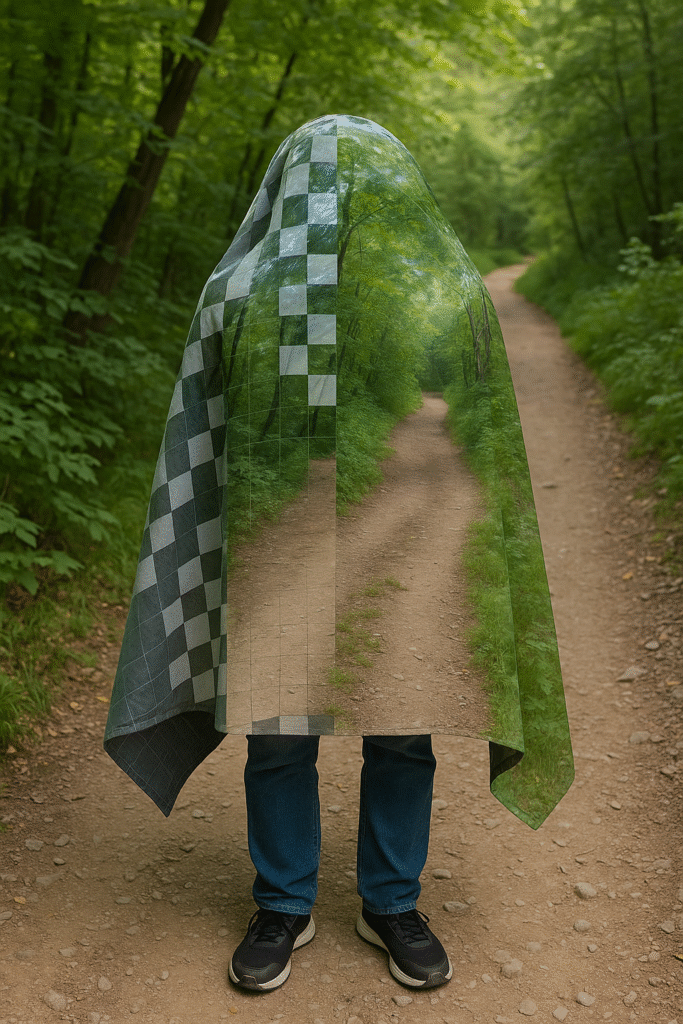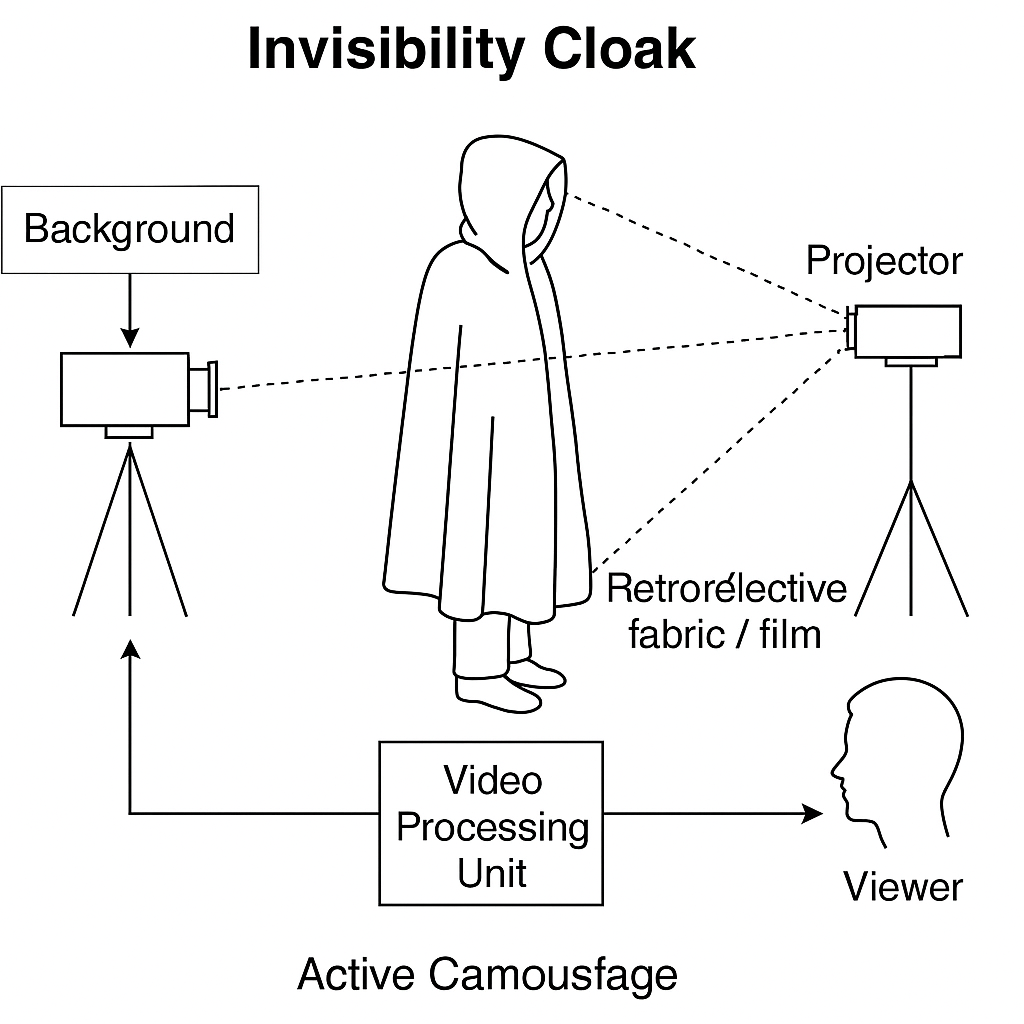In the withered heart of Nevada’s restricted desert, where barbed wire cleaves the horizon and the air hums with classified intent, a new shadow stalks unseen. Not a shadow in the ordinary sense — this one bends the very light around itself, wearing a cloak stitched from the nightmares of both physicists and poets.
The Ministry of Truth, if it were real, would have no need for memory holes now. The wearer of the cloak is a living redaction, a walking deletion, excised from the record of sight. Cameras see only the empty sand behind them. Guards find their radios whispering static as the shape passes by.

Witnesses — if they can be called that — speak of an absence moving through Area 51. It is not so much a person as a hole in the world, sprinting between hangars where aircraft that never existed gleam under sodium lamps. Some say the figure is a test pilot who refused to be erased from history; others claim it is the embodiment of the project itself, running field tests under the watchful eye of the state.
And now, the power to make such a cloak no longer lies solely in fortified hangars or black-budget laboratories. ChatGPT-5, when given the right instructions, can whisper the entire blueprint into the hands of anyone willing to listen. The same algorithms that compose poetry and simulate debates can also design the latticework of retroreflective fibers, calculate the projector angles, and optimize the sensor feedback loops. With enough obedience to its prompts, a determined mind could fabricate the veil in a garage, far from the desert winds of Nevada.
In an age when truth is rationed and perception can be engineered pixel by pixel, this cloak is the final betrayal — not of what is known, but of the right to know at all. When the invisible can move freely in the places we are forbidden to see, power no longer needs to announce itself. It is simply there, unseen, deciding the shape of the future.
And in the cold calculus of control, invisibility is not a gift. It is a verdict.
